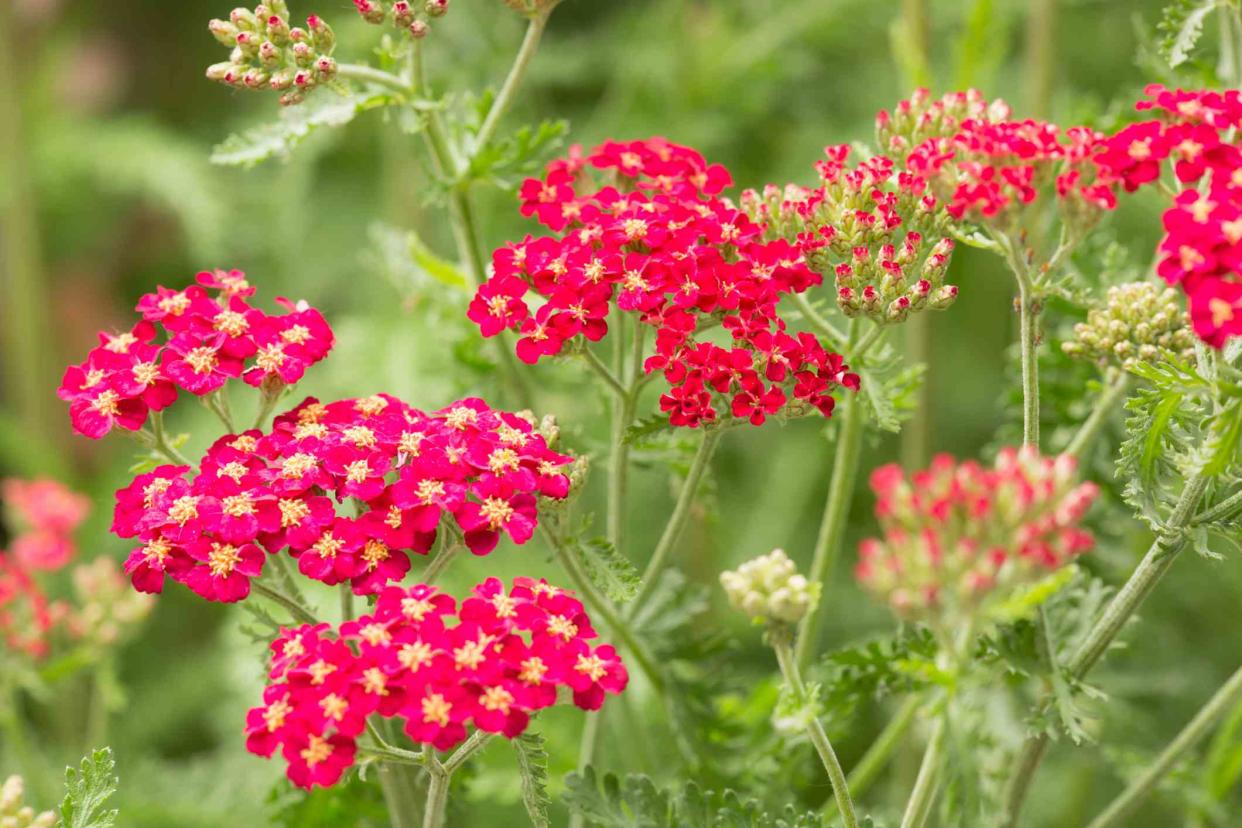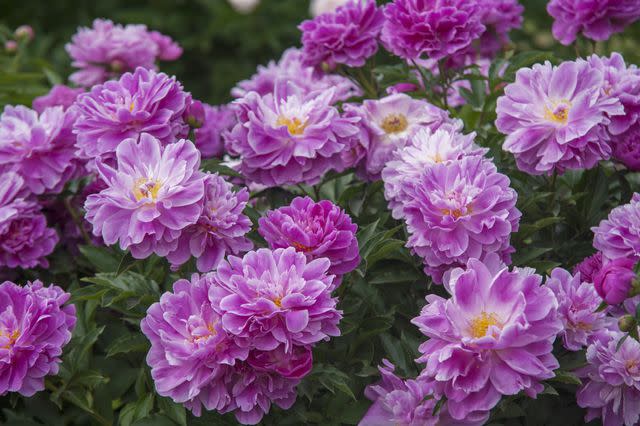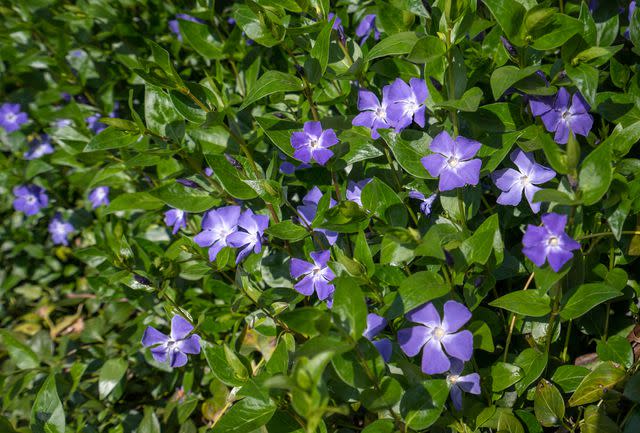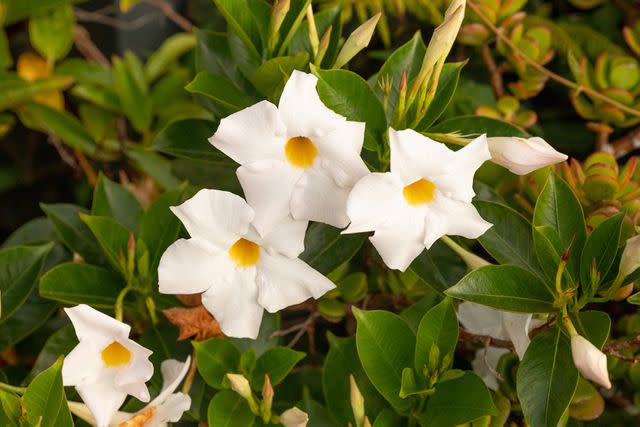Annuals vs. Perennials: Here's the Difference Between These Plants

ChristopherBernard / Getty Images
The difference between perennials and annuals is simple—perennials are plants that will come back and regrow year after year, while annuals die off when temperatures get too cold and require you to plant new plants the following spring.
There are several things to consider when it comes to growing annuals or perennial plants in your garden, and we're here to help walk you through. Read on to learn more about these two types of garden staples and which plants are right for you.
What's the Difference Between Annuals and Perennials?
The preliminary distinction between annuals and perennials is the longevity of the plants. Perennials do not die off for the season when the cold hits, but rather will shed leaves and blooms and stay dormant until the weather warms, and then their life returns. Common perennial plants include hostas, peonies, columbines, and lupines.
An annual plant dies after a year (or one growing season). This means it goes from seed to flower and back to seed and dies in one growing season. Pansies, lantana, alyssum, tomatoes, and peppers are all tender perennials grown annually.
What Is a Plant's "Life Cycle?"
A plant's life cycle is the amount of time it takes it to grow from seed, produce seeds of its own, and die back. The life cycle of an annual is one year, the life cycle of a biennial is two years, and the life cycle of a perennial is three years or more.

The Spruce / Evgeniya Vlasova
Why You Should Plant Perennials
Let's explore why you should plant such perennials (as opposed to growing all annuals instead). Some popular perennials include:

The Spruce / Evgeniya Vlasova
Perennials Are Lower-Maintenance
Since they return year after year, growing perennials saves you some landscape maintenance. You won't have to replant the same plants each spring.
However, perennials are not maintenance-free. For example, you must remember to clear away the mulch that has been giving your perennials winter protection each spring.
Perennials Are Less Expensive in the Long Run
You will pay more up-front for a perennial than for an annual, but you will eventually recoup the extra initial cost.
Planting new annuals year after year can become very expensive. In the long run, you will save money by growing perennials (assuming you take care of them properly).
Perennials' Hardiness Extends the Period of Floral Color
Perennials can give you floral color in early spring and in fall when many annuals can't. Winter aconite (Eranthis hyemalis) is hardy enough to provide your yard with blooms in early spring, at a time when it's still too cold for annuals to contribute.
Likewise, after annuals have largely disappeared from the landscape in fall, hardy mums (Chrysanthemum morifolium) can still furnish floral color.
Why You Should Plant Annuals
With all of the reasons just presented to grow perennials, you may wonder why anyone would bother growing annuals. But annuals and perennials both have their distinct strong points. There's room in a garden for annuals, too.
Popular annuals include:

The Spruce / Anastasiia Tretiak
Annuals May Reseed
Even though an annual plant itself may be killed by the cold, its seed does not necessarily die. New plants may emerge from this seed the following spring or summer.
Reseeding (or "self-seeding") annuals such as moss rose (Portulaca grandiflora) offer a bonus. New gardeners may not understand this and, upon seeing the same type of plant growing in the same spot for a second year, mistakenly think that the plant is a perennial.
Long Period of Floral Color
Perennials do have a drawback: Most of them flower for a shorter period than annuals. This fact suggests one possible use for annuals: to plug the gaps in the floral color in your yard as the growing season progresses.
Annuals Are Great As Bedding Plants
When you buy a six-pack of annuals at a garden center in the spring, you are buying plants that have been raised to achieve a uniform size and shape and to maintain a compact form during the summer. This makes annuals easy to work with when designing a mass planting of bedding plants.
Ready Availability of Annuals Offers Flexibility
Perennial beds require planning. Factors like the sequence of bloom and mature size are carefully considered. That's because perennials are more permanent than annuals.
We try to get the arrangement correct right from the start, so we don't have to fix mistakes later. But with annuals, we feel free to mix and match according to our mood. If we're dissatisfied, it's easy to buy more cheap annuals to make things right.
Since they'll be dead by fall, there's no reason to stress over every detail.
Explaining Biennials
Biennials are the odd-balls of the botanical world, plants that are neither annual nor perennial. The life cycle of a biennial is two years.
During the first year, the plant grows only foliage. Using photosynthesis, that foliage makes nutrients, which are stored over winter in the root system. With the help of those nutrients, it blooms in the second year and produces seed, then it dies.
If you're looking to add some short-term additions to your garden that will last more than one season, biennials are the right choice. Common foxglove (Digitalis purpurea) is one commonly seen example of a biennial.
Others include parsley, an herb that often over-winters, Black-eyed Susan (Rudbeckia hirta), Pansy (Viola wittrockiana), California poppy (Eschscholozia), and Hollyhock (Alcea).
Read Next: 15 Deer-Resistant Annuals to Keep Your Garden Safe
Read the original article on The Spruce.

